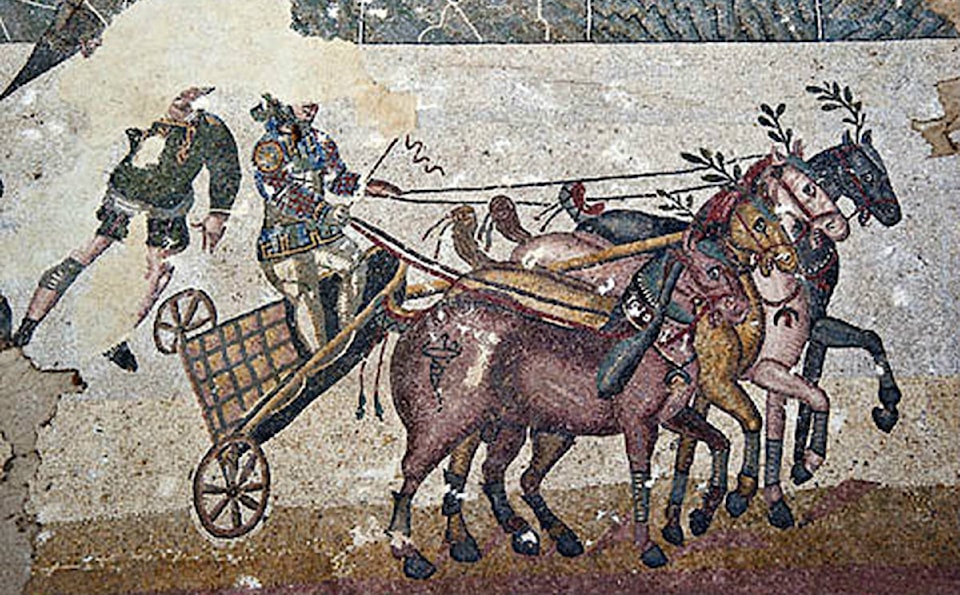Yme Woensdregt
One of my favourite musicals of all time is “Fiddler on the Roof”. The opening number sings about the importance of tradition and sets up the central point of tension in the show. Tradition, says Tevye, tells us who we are, how to behave, how to relate with one another and with God. Tradition is the glue that holds a family or a community together. Tradition … and the rest of the show shows how tradition begins to unravel as the complexities of life unfold.
Our own society has all kinds of traditions as well, whether we’re aware of them or not. When Presidents are inaugurated, or Prime Ministers installed in office, it is surrounded by all kinds of tradition. Remembrance Day is marked by tradition. Weddings and funerals and other significant transition points in life are marked by tradition.
Life can be its best when we take long–standing traditions and fill them with new meanings appropriate to a new day and a new way of being.
Jaroslav Pelikan, one of the foremost historians of Christianity, however warned us of the dangers of a narrow traditionalism. In one of his famous aphorisms, he said, “Tradition is the living faith of the dead; traditionalism is the dead faith of the living”.
I was reminded of this again when a friend sent me an email about the standard railroad gauge (distance between the rails) in the US. The standard is 4 feet, 8.5 inches. What a weird number that is! It’s exceedingly odd. Why such an odd gauge?
Well, the simple answer is “that’s the way they built them in England”, and US railroads were built by English immigrants. And the English built them like that because the first rail lines were built by the same people who built the pre–railroad tramways, and that’s the gauge they used. And ‘they’ used that gauge because the people who built the tramways used the same jigs and tools that they used for building wagons which used that wheel spacing. And the wagons had that odd wheel spacing because otherwise the wagon wheels would break on some of the old, long distance roads in England because that was the spacing of the wheel ruts in the old roads. Those old roads were built by imperial Rome so their legions could travel long distances more easily. Those roads have been used ever since.
And the ruts in the roads were that wide because they were originally formed by Roman war chariots, which everyone else had to match for fear of destroying their wagon wheels. Finally, the wheels were that far apart to accommodate the rear ends of the two horses which pulled the chariots.
So the US standard railroad gauge of 4 feet, 8.5 inches is derived from the original specs for an Imperial Roman war chariot. It’s based on the space for two horses’ rear ends. Bureaucracies, which thrive on traditionalism, live forever.
But it gets even more interesting. Modern space shuttles have two big booster rockets attached to the sides of the main fuel tank. These solid rocket boosters were designed at a factory in Utah. The engineers who designed them would have preferred to make them a bit fatter … but they had to be shipped by train from the factory to the launch site. The railroad line from the factory happens to run through a tunnel in the mountains. The rockets had to fit through the tunnel, which is slightly wider than the railroad track; and the railroad track, as you know, is about as wide as two horses’ behinds.
So, a major design feature of what is arguably the world’s most advanced transportation system was determined over two thousand years ago by the width of a horse’s rear end.
I couldn’t help but laugh when I got that email. All of us, to some extent, are caught by such unthinking traditionalism. We think that the way we do things makes good sense … but truthfully, we often do them that way because we’ve always done them that way. We never really think it through. We do something once … and twice … and then it becomes a tradition, even when the original reason for it has passed. After all, who decrees that a set of train tracks needs to be the same width as a set of chariot wheels? Arguably, it was important to be aware of the rear ends of horses for a chariot, but it makes much less sense for a train.
The church is especially vulnerable to this. A popular spiritual sings, “Gimme that old time religion” because “it was good enough for (add a name here)”.
But let me challenge that. Is it really true that our faith doesn’t change? I don’t think so. Each generation has new questions based on new knowledge, and I would argue that each age needs to formulate its faith in a new way to meet new needs and to answer new questions. We can’t just keep doing the same old things the same old way.
And honestly, while change is difficult, it’s easier to discern new answers to new questions than it would be to change the railway track system in North America.
Tradition can be a very good thing. Traditionalism usually is pretty unhealthy.
Rev. Yme Woensdregt is Pastor at Christ Church Anglican in Cranbrook
